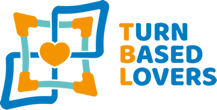Commodore 64 had such a vast library – it seemed like there was something for any sort of player in it: From solid ports of arcade titles, like Wizard of Wor, to incredibly weird licensed projects – How To Be a Complete Bastard. There was even a complete simulation of being homeless, called From Rags To Riches. Naturally, there were a ton of turn-based games. We’ve already seen a few great ones in the original list, but why stop there? So, let’s take a look at some of the other memorable titles for that legendary machine.
ALTER EGO – FROM THE CRADLE TO THE GRAVE
I am slightly cheating by including this, but among life simulations, Alter Ego still stands as one of the most important titles ever released. Developed by psychiatrist Peter Favaro in 1986, the objective of the game was exactly that: simulate an entire life, from birth to death. The player could get through their existence by clicking through a diagram of tiny boxes.
Behind each box there is a random event that takes place, with the icons representing the overall theme: mental, emotional, school or work-related. The player interacts with the game via keyboard. There are usually but a few choices for each event. As such, it all feels more like a quiz, rather than a fully-featured interactive adventure.
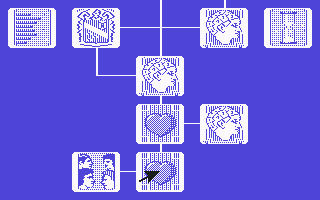
As a child, one would have to care about school – doing homework and attending classes. Same as a teenager with high school. Then there’s college, along with managing romantic relationships and one’s finances. The game does force the player to act like “the good guy” most of the time. So there’s no option to run away and join a satanic cult or any similar shenanigans. Random events would also happen throughout one’s run. Many of them actually result in a quick and brutal death, even at an infant age, depending on one’s choices (which, unfortunately, is not that unrealistic).

The title originally came out in separate male and female versions, with different events for each. The overall tone really feels like a byproduct of its age (do not expect the game to embrace anything that is not heteronormative!) However, Alter Ego was incredibly advanced for its time and, despite some obvious technical limitations, mostly succeeded at what it set out to do. It can still be played in browser form and, to this day, it feels like an early attempt at an ambitious visual novel with some quite explicit events (both of a violent and sexual nature) included. Definitely one of a kind.
LASER SQUAD – X-COM BEFORE ITS TIME
Developed by turn-based expert Julian Gollop, who by then had already worked on titles like Rebelstar Raiders, Laser Squad came out in 1988 for Commodore 64. The game puts the player in charge of a small team of space marines. The story consists of several missions. The objectives vary from having to defeat the evil Sterner Regnix, to rescuing operations.
The gameplay presented many, in-depth for the time, choices in terms of controlling the squad. Some features have since become standard for the genre, like morale and stamina. Furthermore, each marine has multiple additional abilities, that the player must correctly employ. While – perhaps – not as complex as many SSI titles of the time, Laser Squad was definitely way easier to get into and have fun with. Also – the maps in the game feature an amazing amount of detail.
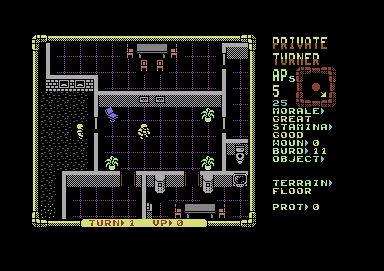
After the release, the developers have published a few additional missions, sort of like an expansion pack. The players could order these via mail. The true official sequel would come years later, in 2002, called Laser Squad: Nemesis. However, the true continuation of the ideas from Laser Squad is in the X-Com series, by Microprose. Gollop worked on this, as well, until the final isometric strategic title in the series – Apocalypse. The famous franchise would add many new features to the basic gameplay. Most notably, the ability to level up those marines who’ve survived through several missions.
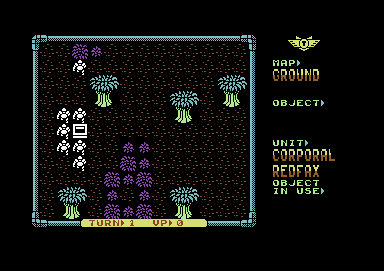
LORDS OF CHAOS – GOLLOP’S AT IT AGAIN
We have just left Julian Gollop, only to find him again, with the very next title on this list. The game he worked on right after finishing Laser Squad, ditches the sci-fi/cyborg theme of his previous titles, in favor of the fantasy aesthetics. The story is simple: A group of wizards has given up on their old world, which is in complete chaos. Instead, they invade a new one, where they now battle against each other. Up to four wizards can take part in each run, controlled by the player or the computer. The sole objective is to escape with your riches after defeating the evil mage Torquemada.
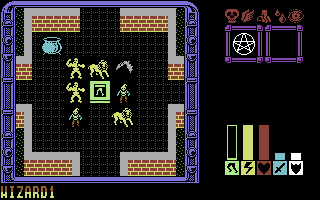
Despite using a similar interface to that of Laser Squad and even the same font – the game had plenty of features more typical for an RPG, rather than a pure turn-based tactical game. Each wizard can use their powers to launch defensive and offensive spells. They can also conjure up several mythical creatures, like golems and unicorns. All creatures, a bit like the marines in Gollop’s previous title, have unique skills and abilities. For example, Undead can only be killed when fighting with another Undead. While there is the single-player mode, Lords of Chaos shines when there are four human players battling against each other.
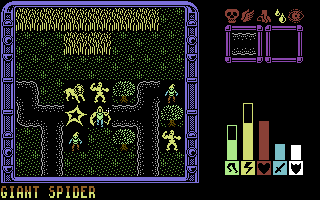
Lords was actually a sequel to the original 1985 Chaos, which was a ZX Spectrum exclusive. Similarly, again, to Laser Squad, the game would receive a quite late sequel in the form of Chaos Reborn, in 2014. It featured a hexagonal map and kept the 2-6 player mechanics. It also complemented the original hot-seat with the classic online multiplayer.
WEATHERWAR II – THE EARLIEST FORM OF DEATHMATCH
I am delving into a very obscure early Commodore 64 title here, but where else are you ever going to read about this game? In 1983, there weren’t that many games available for the home computer. Those few that were, still did not take full advantage of the hardware. In a way, Weatherwar II does feel slightly primitive, especially because of being developed entirely in BASIC. Which means no fancy fonts or any quick-paced gameplay.
However, it does feature some, rather interesting, mechanics. Where else could you take turns battling against a friend using weather powers? Yes, that’s indeed what is going on – each player must attack the opponent’s castle by evoking various forms of weather, like lightning, hail, tornado, etc. from a cloud that slowly drifts up above.
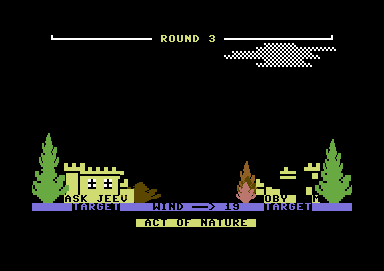
After selecting the weapon, the game asks for a charge value. This will influence the attack’s direction. Thus, you’ll have to be careful to direct the attack the right way, depending on where the cloud is drifting. Otherwise, you might end up hitting your very own fortress. You should also consider the wind, when choosing the charge number. In addition, every once in a while, a random “act of nature” will take place. This might very well give an advantage to a player. The first player to eradicate the other’s fortress wins.
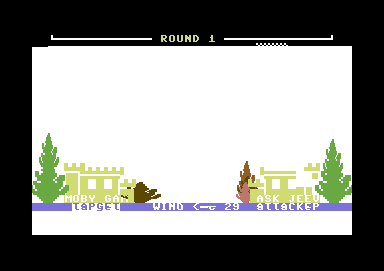
By all accounts, there never was any Weatherwar I. Instead, the game was an advanced version of Ouranos! which came out in 1980 for Commodore Pet. It also featured two players battling against each other using the forces of nature. Ouranos!, even though developed by another programmer, was published by the very same software house behind Weatherwar II. However, the connection – if indeed there is any – between the two games is still unclear to this day.
POOL OF RADIANCE – THE FIRST AD&D GAME
Oh, how brightly shone the city of Phlan, before the monsters came and took control of everything! Now, we humans have to carry on with our lives in New Phlan, never daring to pass beyond the town’s gates, for fear of being attacked. Will anyone come to our rescue? Perhaps… a party of adventurers in search of fortune? Thus, begins Pool of Radiance – the first computer game to use the Advanced Dungeons & Dragons rule set.
It was the product of the soon-to-be celebrated American studio Strategic Simulations Inc. The 1988 game is also quite famous for being the debut of their Goldbox engine – which has since powered many other SSI titles. Among them, the Buck Rogers series.

The heroic party of made of up to six customizable characters. The player must choose each adventurer’s fantasy race and assign their skills and attributes. Along with selecting their moral alignment, in classic AD&D fashion. The players explore the game’s world, including the dungeons, from a first-person pseudo 3D perspective.
During the turn-based combat, however, the game switches to an isometric view. This will become traditional for the series, with attributes and skills playing an important role, influencing how much damage our characters both take and inflict. There’s also a Journal included – yes, of the paper variety – to enrich and explain many encounters and plot points.
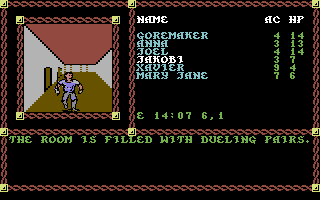
Interestingly, Pool of Radiance received a NES conversion. It simplified many of its RPG features and added a full soundtrack. Several direct sequels soon followed, including Secret of the Silver Blades and Curse of the Azure Bonds.
THE MARS SAGA – GET YOUR A*S TO WESTWOOD
Released in 1988 this adventure RPG is among the very first games by Westwood, and probably among their lesser known ones, as well. It was developed by Louis Castle, who would later become the head of the company, working on titles such as Command & Conquer and Blade Runner. The Mars Saga features quite an interesting narrative. It came out before Wasteland, catapulting the player into a harsh desert environment, where they’ll fight Martian creatures, using turn-based mechanics. Taking a page out of SSI‘s rule book, the player can create a team and carefully distribute skills, like Blade-handling and Mining, to create a balanced set of characters.
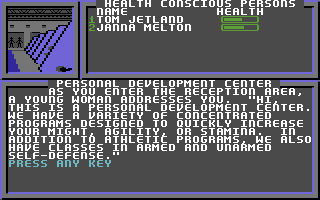
Our team’s objective is to discover what happened to one of the colonies on Mars, that we’ve lost contact with a while ago. The scale is quite small compared to many other RPGs of the time, but that’s part of the charm of Mars Saga. It is possible to explore the few colonies in the game, moving between them, completing quests and gathering new items for our team.
The party can also take on additional recruits. Those will only show up, however, after the team – initially just two people – proves itself to be reliable and of good reputation. Combat takes place from a top-down perspective and also gives the player a much-needed option of allowing the computer to fight in their place (even if that’s rarely the most efficient way to win a fight).
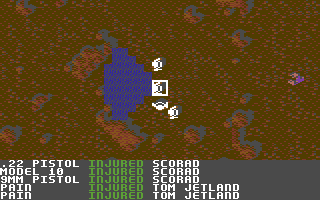
Having disappeared into the ether not long after its initial release, The Mars Saga has never been released again in any form and has long since become abandonware. While the game is easily accessible, mastering it will take a while, requiring both skill and luck. However, with its intricate narrative, I can definitely say that it is absolutely worth the player’s time.
THE RETURN OF HERACLES – A GREEK GOD TO BIND THEM
Among the few developers of early computer adventures, the name of Stuart Smith isn’t the most well-known. Probably because he did not develop anything after 1986. But, in the early 80s, he first dazzled many players with Ali Baba and the Forty Thieves, and then went all out with The Return of Heracles. Released in 1983, and converted for Commodore 64 a few years later, the game puts the player in control of Greek divinities, sent by Zeus to accomplish several tasks in Greece.
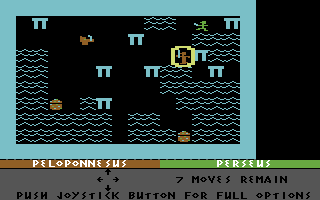
One interesting feature of this turn-based adventure roleplaying title is that the player can decide to control a single deity or up to fourteen. These must be guided through dungeons and other locations, battling enemies to recover mission-important items. Each god has its own set of abilities and attributes, along with equipment. And the latter may, sometimes, not be quite up to the task (Zeus is quite the cheapskate, isn’t he?) Smith basically set out to recreate a sort of interactive version of several episodes of Greek mythology, so that young players could learn something and also have fun.

The Return of Heracles is one of those games that quickly faded into obscurity after the initial release. Smith’s final work was the memorable Adventure Construction Set, which influenced tools like Elder Scrolls Construction Set. It was also employed in the updated version of Return of Heracles in the compilation Age of Adventure, released for Commodore 64 in 1986.
